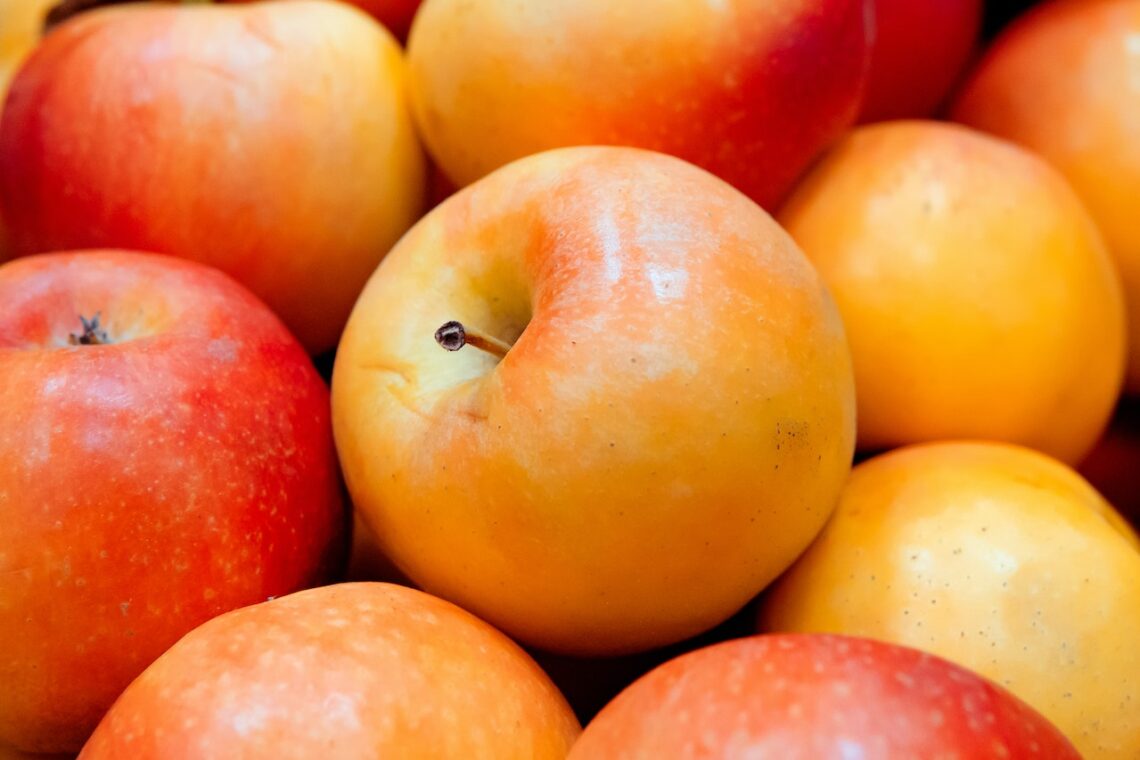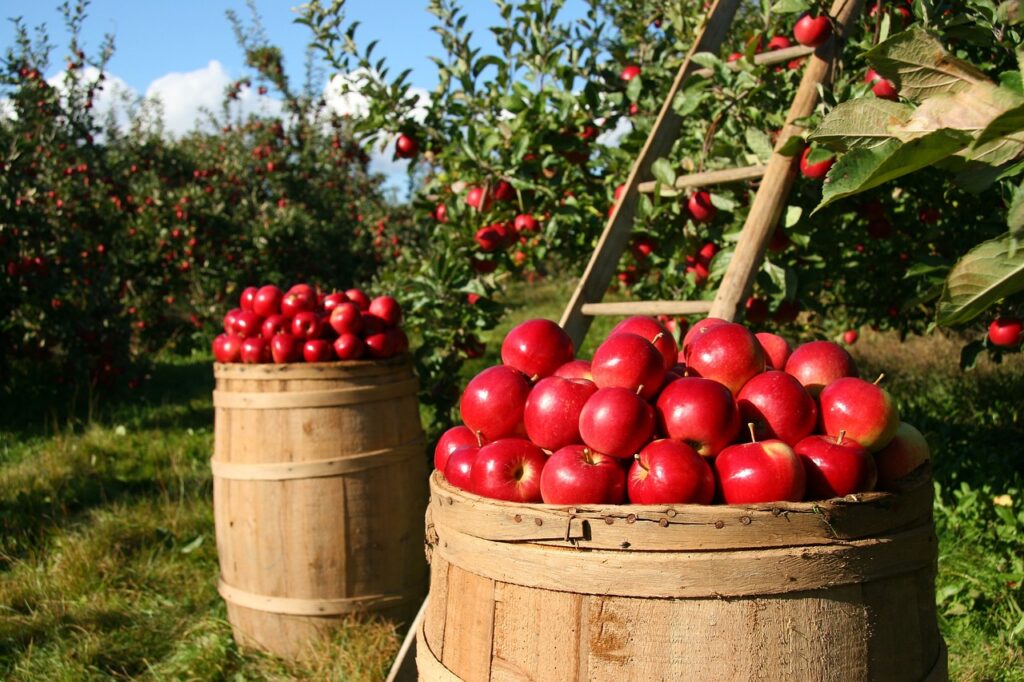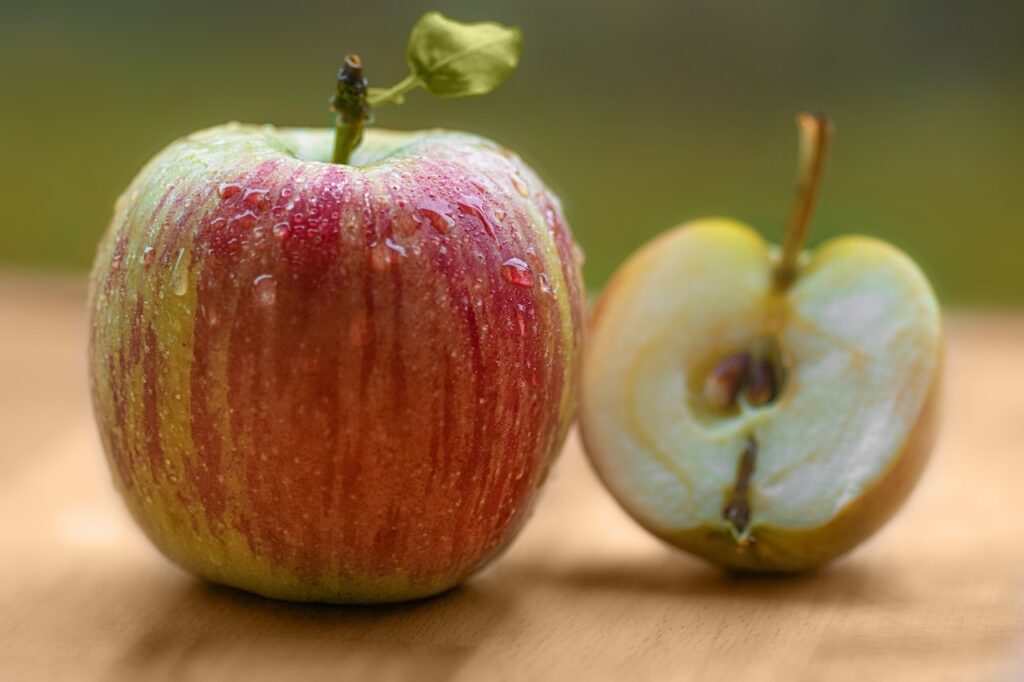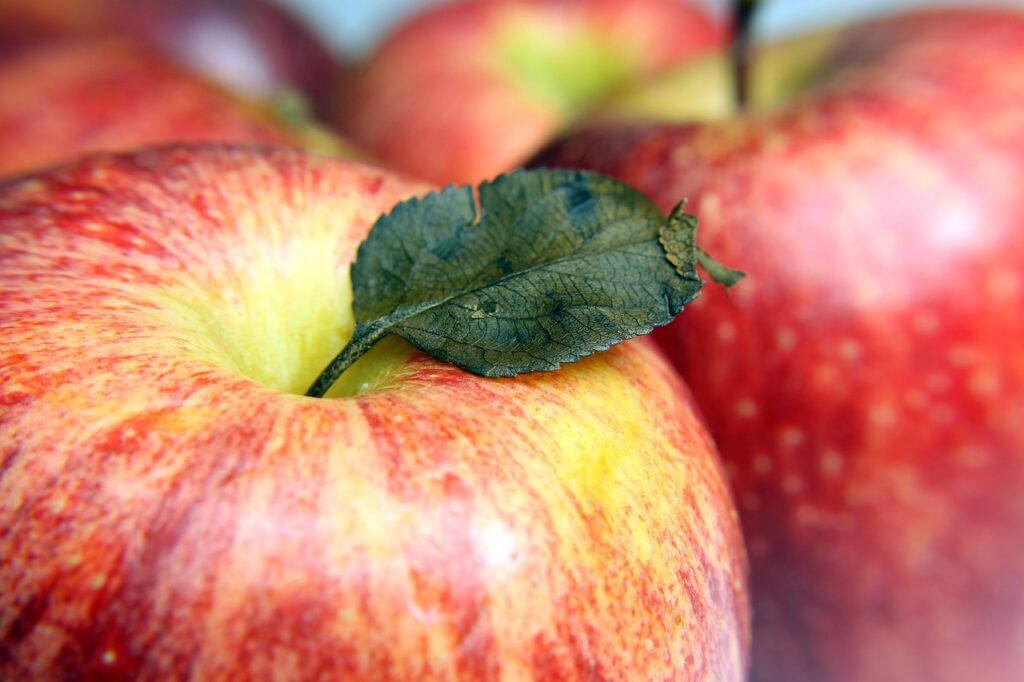
The Best 63 Interesting Facts About Apples: Nature’s Delight
Interesting Facts About Apples
Welcome to a deep dive into the fascinating world of apples! As an authority on this topic, we will explore various aspects of this beloved fruit, including its origins, diverse varieties, health benefits, and even some fun and unexpected facts. So, sit back, relax, and embark on a journey through the orchards of knowledge as we uncover “Facts About Apples.”
Varieties of Apples
1: Exploring Apple Diversity
Apples come in a mesmerizing array of varieties. From the sweet and crisp Fuji to the tart and tangy Granny Smith, these fruits cater to every palate. In North America alone, you can find an abundance of apple cultivars that thrive in different regions.
Fun Facts About Apples
2: Unearthing Fun Tidbits
Did you know that it takes around 36 apples to create one gallon of apple cider? That’s a lot of apple goodness in every sip! Apple seeds, often discarded, actually contain a small cyanide-producing compound, making them somewhat poisonous if consumed in large quantities.
The Largest Apple Ever
3: An Epic Discovery
The record for the largest apple ever is truly astounding. Imagine an apple weighing in at over 4 pounds! This colossal fruit was no ordinary apple; it was a testament to nature’s wonders.
Red Delicious and New York
4: Apples and the Empire State
New York has a deep-rooted connection with apples, especially the iconic Red Delicious variety. Known for their vibrant red hue and sweet flavor, these apples have become synonymous with the state.
The First Fruit

5: Apples in History
Apples hold a special place in history as one of the first fruits cultivated by humans. They’ve been a part of our diets for thousands of years, and their importance extends beyond just their delicious taste.
Pounds of Apples: An Average Perspective
6: Crunching the Numbers
On average, an American consumes approximately 19 pounds of apples each year. This speaks to the enduring popularity of this fruit among people of all ages.
Apple Blossom Beauty
7: The Blooms of Spring
Apple orchards in full bloom are a sight to behold. Each delicate apple blossom contributes to the promise of a bountiful harvest, making them a cherished symbol of renewal.
John Chapman: The Legend of Johnny Appleseed
8: Planting Apple Seeds of Knowledge
John Chapman, better known as Johnny Appleseed, played a vital role in spreading apple cultivation across America. His story is a testament to the enduring legacy of apples.
Apple Juice and Golden Delicious
9: Liquid Gold
Apple juice, a beloved beverage, provides a refreshing taste of this fruit in a convenient form. The Golden Delicious variety, with its honeyed sweetness, is often used to make this popular drink.
Grams of Fiber and Vitamin C
10: Nutritional Powerhouse
Apples are not just delicious; they’re also nutritious! With a high fiber content and a healthy dose of vitamin C, they contribute to overall well-being.
Exploring Apple Orchards

11: A Trip to Remember
Visiting an apple orchard is an experience like no other. The scent of ripe apples in the crisp, autumn air and the joy of picking your own fruit make for lasting memories.
Facts About Apples 10 Frequently Asked Questions
Now, let’s address some commonly asked questions about apples:
What is the only apple native to North America?
The only apple native to North America is the crabapple, also known as Malus Coronaria. It is the only apple species naturally occurring on the continent.
How many apple varieties range in shades of red?
There are numerous apple varieties that come in varying shades of red. Some well-known examples include Red Delicious, Fuji, and McIntosh, among others.
Who was John Chapman, and why is he famous?
John Chapman, popularly known as Johnny Appleseed, was a legendary American nurseryman who traveled throughout the Midwest and planted apple orchards during the 19th century. He is famous for his role in spreading apple cultivation across the United States.
What are the health benefits of consuming apples regularly?
Consuming apples regularly can have several health benefits. They are rich in dietary fiber, which aids digestion, and they provide essential vitamins and antioxidants. Apples may also help lower cholesterol levels, support heart health, and promote weight management.
Facts About Apples
Which apple varieties are often used for making apple cider?
Apple cider is commonly made from a blend of apple varieties, including those with a balance of sweet and tart flavors. Some popular cider apple varieties include McIntosh, Granny Smith, and Golden Delicious.
What is the significance of apples in Greek and Norse mythology?
In Greek mythology, apples were associated with the Garden of the Hesperides and symbolized immortality. In Norse mythology, apples were linked to the goddess Idun and represented eternal youth for the gods.
How do apples play a role in Chinese culture?
Apples hold a symbolic meaning of peace and harmony in Chinese culture. They are often exchanged as gifts during festivals and weddings, symbolizing good wishes and well-being.
Facts About Apples
Which apples are considered the “Guinness World Records” of the fruit world?
The heaviest apple ever recorded in the Guinness World Records weighed over 4 pounds and 1 ounce, making it a remarkable example of apple size.
What are the different types of apple products available in the market?
Apple products include various food and beverage items, such as apple juice, apple sauce, apple cider, apple butter, and even apple-flavored snacks and desserts.
Can you tell us a fun apple fact from “The Book of Genesis”?
In “The Book of Genesis,” the apple is often associated with the fruit from the Tree of Knowledge, which Adam and Eve were forbidden to eat in the Garden of Eden. While the fruit is often depicted as an apple in art and culture, the Bible does not specifically mention the type of fruit.

Facts About Apples Conclusion
In this first installment of “Facts About Apples,” we’ve embarked on a journey through the world of apples, from their diverse varieties to their rich history and nutritional value. We’ve scratched the surface of this delightful topic, and there’s so much more to explore.
Stay tuned, where we’ll dive deeper into the science of apples, their role in culture and mythology, and the numerous health benefits they offer. Remember, we’re here to satisfy your curiosity about “Facts About Apples.”
12: Apples and the Human Body
Apples have a remarkable relationship with the human body. They say, “An apple a day keeps the doctor away,” and there’s some truth to that saying. Apples are a rich source of dietary fiber, which aids in digestion and helps maintain a healthy gut. They also contain essential vitamins and minerals, including vitamin C, which boosts the immune system and promotes healthy skin.
13: Apple Products and Innovation
Apples have inspired innovation beyond just the fruit itself. The tech giant Apple Inc., founded by Steve Jobs, takes its name from this humble fruit. It’s a nod to simplicity, elegance, and innovation—the same qualities that apples embody. Apple products, from iPhones to MacBooks, have revolutionized the way we communicate and work.
14: Forbidden Fruit in Mythology
Apples have played a pivotal role in various mythologies. In Greek mythology, the golden apples of the Hesperides were a symbol of immortality, guarded by a fearsome dragon. In Norse mythology, the goddess Idun kept apples that granted eternal youth to the gods. These myths reflect the allure and mystique surrounding apples in ancient cultures.
15: Apples in Chinese Culture
In Chinese culture, apples symbolize peace and harmony. They are often exchanged as gifts during festivals and weddings, signifying good wishes for the recipient. The word for apple, “ping guo,” also sounds similar to the word for “peace,” making it a popular symbol of well-being and tranquility.

Facts About Apples
16: Guinness World Records in Apple World
Apples have made their mark in the Guinness World Records. The heaviest apple ever recorded weighed a whopping 4 pounds and 1 ounce, a true testament to the extraordinary potential of this fruit.
17: Exploring Different Types
There’s a wide range of apple varieties, each with its unique flavor and characteristics. From the crisp and juicy Honeycrisp to the sweet and spicy Gala, exploring the diverse world of apples can be a delightful adventure for your taste buds.
18: The Role of Apples in Cuisine
Apples have long been used in culinary creations. They feature prominently in classic dishes like apple pie and caramel apples. Early English apple pies were savory, filled with meat, and served in a thick pastry crust. Over time, they evolved into the sweet, fruity pies we love today.
19: A Saying as Old as Apples
The saying, “You are the apple of my eye,” is a charming expression of affection. Its origins date back to the Old Testament in the Book of Deuteronomy, where it conveys a deep and cherished love.
20: The Science of Apples
The science of apples, known as pomology, explores every facet of apple cultivation and production. It involves the study of apple tree varieties, diseases, and the intricacies of apple breeding. Pomologists work tirelessly to develop new apple varieties that are tastier, more disease-resistant, and better suited to various climates.
21: Granny Smith Apples: A Tart Delight

Granny Smith apples, with their bright green skin and tart flavor, hold a special place in the hearts of many apple enthusiasts. These apples are ideal for baking, as their tartness adds a delightful contrast to sweet recipes like apple pies and crisps.
Fascinating fact: Granny Smith apples were named after Maria Ann Smith, an Australian orchardist who discovered this variety in the 1860s.
Facts About Apples
We’ve covered a range of topics related to “Facts About Apples,” from their impact on health to their presence in myths and cultures worldwide. In the next installment, we’ll delve deeper into apple cultivation, their journey from orchard to grocery stores, and how to enjoy apples in various recipes. Continue the adventure as we explore the world of apples!
22: Apple Orchards and Cultivation
To truly understand the journey of apples from tree to table, we must explore the fascinating world of apple orchards and cultivation. Apple trees are a common sight in orchards, where they thrive in various climates, from the sunny orchards of California to the crisp, cool ones in New England.
Apple trees are typically grown from grafted cuttings rather than from seeds, ensuring that they produce the desired variety of apple. These orchards require careful maintenance, including pruning, pest control, and irrigation, to ensure healthy and bountiful harvests.
23: From Orchard to Grocery Stores
Once apples are harvested from the orchards, they embark on a journey to grocery stores around the world. The apples are carefully sorted, cleaned, and packaged to ensure their quality and freshness.
During this process, any damaged or bruised apples are separated from the perfect ones. Apples are then stored in temperature-controlled environments to extend their shelf life and preserve their taste and texture.
24: Enjoying Apples in Recipes
Apples are incredibly versatile in the kitchen and can be used in a variety of culinary creations. From sweet desserts like apple pie and apple crisp to savory dishes like apple-stuffed pork chops, there’s no shortage of delicious recipes to explore.
One classic apple dessert is the beloved apple strudel, a flaky pastry filled with spiced apples, sugar, and cinnamon. This delectable treat hails from Central Europe and has become a favorite worldwide.

25: Apple Bobbing: A Fun Tradition
Apple bobbing is a popular game often associated with Halloween or harvest festivals. It involves filling a tub or basin with water and floating apples in it. Participants must use their teeth to grab apples without using their hands.
This amusing tradition dates back centuries and adds an element of fun to seasonal celebrations. It’s a testament to the enduring appeal of apples in various cultural festivities.
Facts About Apples
26: Exploring the Science of Apples
The science of apples delves deeper into the genetic makeup and breeding of apple varieties. Researchers work tirelessly to create new varieties with improved characteristics, such as resistance to diseases and pests or extended storage life.
Modern techniques like DNA analysis have revolutionized apple breeding, allowing scientists to select and cultivate apples with specific traits. This scientific endeavor ensures a steady supply of apples with consistent quality.
27: Apple Cider Vinegar and Its Benefits
Apple cider vinegar (ACV) has gained popularity in recent years for its potential health benefits. It is made from fermented apple juice and contains acetic acid, which may aid digestion, support weight loss, and regulate blood sugar levels. ACV is also used as a natural remedy for various ailments.
28: Massachusetts Bay Colony: Apple Pioneer
In the early days of American settlement, apples played a crucial role. The Massachusetts Bay Colony is credited with introducing apple cultivation to North America in the 17th century. As pioneers expanded westward, they carried apple seeds and saplings with them, contributing to the spread of apple orchards across the continent.
29: The Long History of Apples in America
Apples have been part of American history for centuries, from Johnny Appleseed’s legendary apple tree plantings to the countless apple festivals held across the country. National Apple Month, celebrated in October, honors the rich heritage and delicious flavors of this fruit.
30: The Apple’s Role in Folklore and Sayings
Apples have woven themselves into the fabric of our culture and language. Whether it’s the tempting apple in the story of Adam and Eve or phrases like “the apple of my eye,” apples have left an indelible mark on our folklore and everyday expressions.
Fact: Apple cider vinegar has been used for centuries as a traditional remedy, with its historical roots tracing back to ancient Babylon.
Facts About Apples
In this installment, we’ve explored the journey of apples from orchard to table, their versatility in recipes, and their enduring presence in cultural traditions and folklore. In the next section, we’ll delve into the nutritional benefits of apples, their impact on human health, and the importance of apple preservation techniques. Continue your apple adventure with us as we uncover even more “Facts About Apples!”

31: Nutritional Benefits of Apples
Now, let’s peel back the layers of nutrition and health benefits that apples offer. Apples are a nutritional powerhouse, packed with essential vitamins, minerals, and dietary fiber. They are a fantastic addition to a balanced diet and contribute to overall well-being.
Apples are a rich source of vitamin C, which boosts the immune system and promotes healthy skin. Additionally, they contain various antioxidants that help protect cells from oxidative damage, reducing the risk of chronic diseases.
32: Dietary Fiber and Digestive Health
One of the standout features of apples is their high dietary fiber content. A medium-sized apple contains around 4 grams of fiber, which aids in digestion and helps maintain a feeling of fullness. This makes apples an excellent snack choice for those looking to manage their weight.
The fiber in apples also supports a healthy gut microbiome, promoting the growth of beneficial bacteria that contribute to overall digestive health.
33: Apples and Heart Health
Regular consumption of apples has been linked to improved heart health. The soluble fiber in apples helps lower cholesterol levels, reducing the risk of heart disease. Potassium, another key nutrient in apples, plays a role in regulating blood pressure.
Apples are also known to contain antioxidants that support heart health by reducing inflammation and oxidative stress.
34: Weight Management and Apples
Apples can be a valuable ally in weight management. Their high fiber content helps control appetite and reduce calorie intake, making them an ideal snack for those aiming to shed extra pounds. The water content in apples also adds to their satiety factor.
Incorporating apples into your diet can help you stay on track with your weight management goals without sacrificing taste.
35: Apple Preservation Techniques
To ensure a year-round supply of apples, various preservation techniques come into play. Apples can be stored in controlled atmospheres to extend their shelf life. They can also be dried to make apple chips or dehydrated for use in recipes.
One classic preservation method is making applesauce or apple butter, which involves cooking apples with sugar and spices until they reach a spreadable consistency. These preserves are a delightful addition to breakfast or dessert.
Facts About Apples

36: The Role of Apples in a Balanced Diet
Apples are a versatile and convenient snack, making them a popular choice for those striving to maintain a balanced diet. Whether enjoyed whole, sliced in salads, or blended into smoothies, apples are a guilt-free indulgence that can satisfy sweet cravings while providing essential nutrients.
37: Apples and Active Lifestyles
For those leading active lifestyles, apples offer a quick and nutritious energy boost. The natural sugars in apples provide a steady source of energy, making them an ideal pre- or post-workout snack.
38: Apple Varieties for Different Tastes
Apples cater to a wide range of taste preferences. If you prefer sweetness, varieties like Honeycrisp and Fuji will delight your palate. For those who enjoy tartness, Granny Smith apples are a perfect choice. Exploring different apple varieties can add variety and excitement to your diet.
39: Apple Blossoms and the Joy of Spring
Apple blossoms, often overlooked in favor of the fruit they precede, are a delightful sign of spring’s arrival. Their delicate pink and white petals blanket apple orchards, announcing the promise of a bountiful harvest.
These blossoms symbolize renewal and the cycle of life, reminding us of nature’s resilience and beauty.
40: The Joy of Apples in Everyday Life
As we conclude this segment, it’s clear that apples offer not only nutrition and health benefits but also joy in everyday life. Whether enjoyed fresh, baked into a pie, or pressed into cider, apples have a special place in our hearts and homes.

Fact: A medium-sized apple contains approximately 195 milligrams of potassium, contributing to your daily recommended intake of this essential mineral.
Facts About Apples
In this installment, we’ve uncovered the remarkable nutritional benefits of apples, their role in heart health and weight management, and the various preservation methods that ensure a year-round supply of this beloved fruit. In the next section, we’ll explore the cultural significance of apples, their portrayal in literature and art, and the role of apples in everyday idioms. Join us as we continue to unveil “Facts About Apples!”
41: Apples in Culture and Art
Apples have permeated culture and art for centuries, serving as symbols, motifs, and subjects of fascination for artists and writers alike. Their rich cultural significance has left an indelible mark on various forms of artistic expression.
In literature, apples often appear as powerful symbols of knowledge, temptation, and desire. The biblical story of the forbidden fruit in the Garden of Eden, often depicted as an apple, represents the allure of the unknown and the consequences of indulgence.
42: The Apple in Everyday Idioms
Apples have become integral to our everyday language, featuring prominently in idioms and expressions. Phrases like “an apple a day keeps the doctor away” emphasize the fruit’s health benefits. “Comparing apples to oranges” highlights the incompatibility of two distinct things, while “upset the apple cart” suggests causing disruption or chaos.
These idioms reflect the deep-rooted presence of apples in our daily lives and language.
43: Apples in Art and Symbolism
Apples have also been a popular subject in visual arts. From classic still-life paintings of apples to modern, abstract interpretations, artists have celebrated their shape, color, and symbolism.
One iconic example is Paul Cézanne’s series of paintings featuring apples. His meticulous exploration of form and color in these works elevated apples to a symbol of artistic inspiration and creativity.
44: Apples in Folklore and Superstitions
Throughout history, apples have been associated with various superstitions and folklore. In some cultures, it was believed that placing an apple under your pillow would lead to dreams of your future spouse. Apple peelings thrown over one’s shoulder could reveal the initial of a future love interest.
Apples were also used in divination practices, such as “apple bobbing” during Halloween, where individuals attempted to bite into apples floating in water to predict their future.
Facts About Apples

45: Apple Varieties: A World of Choices
The world of apples is incredibly diverse, with thousands of varieties cultivated globally. Each variety has its unique flavor profile, texture, and culinary uses.
For example, the crisp and slightly tart Granny Smith apples are excellent for baking, while the sweet and juicy Gala apples are perfect for snacking. Exploring the array of apple varieties can be a delightful culinary adventure.
46: The Legacy of Isaac Newton’s Apple
Isaac Newton’s famous encounter with a falling apple is an enduring image in the history of science. According to legend, the sight of an apple falling from a tree inspired his groundbreaking theory of gravity.
This iconic moment in scientific history underscores the role of apples in human curiosity and discovery.
47: Apples in the Digital Age
In today’s digital age, apples have transcended the fruit bowl to become synonymous with technology and innovation. The logo of Apple Inc., a stylized apple with a bite taken out, is instantly recognizable worldwide.
The late Steve Jobs, co-founder of Apple Inc., played a pivotal role in shaping the digital landscape, and his visionary approach to technology has left an indelible mark on modern life.
48: Apple Orchards: A Retreat into Nature
Visiting apple orchards is not just about fruit; it’s a return to nature. The sight of row upon row of apple trees, the scent of ripe fruit in the air, and the joy of picking your own apples create a sensory experience that connects us to the land.
49: The Joy of Homemade Apple Recipes
The culinary possibilities with apples are endless. From classic apple pie to savory pork dishes, apple salad to applesauce, these recipes bring comfort and nostalgia to the table.
Consider whipping up a warm apple crisp on a chilly autumn evening, or savoring a slice of apple tart accompanied by a scoop of vanilla ice cream. The simple pleasure of enjoying apples in homemade recipes is a true delight.
50: Apples and the Future
As we conclude this exploration of “Facts About Apples,” we recognize that the story of apples is far from over. With ongoing research and innovation in agriculture, apples will continue to evolve, offering new flavors, varieties, and health benefits.
Apples will remain a symbol of knowledge, temptation, and the beauty of nature. They will continue to inspire artists, writers, and scientists, weaving their timeless charm into the tapestry of human culture.
Facts About Apples Conclusion
Fact and source, here’s one: The logo of Apple Inc., featuring a stylized apple with a bite taken out, was designed by Rob Janoff in 1977.
In this final installment, we’ve explored the cultural significance of apples, their role in language and art, and their enduring presence in folklore and superstitions. We’ve also celebrated the diversity of apple varieties and their place in the digital age. As we wrap up this article, we hope you’ve gained a deeper appreciation for the extraordinary world of “Facts About Apples.”





One Comment
Pingback: